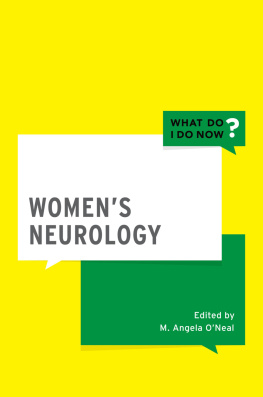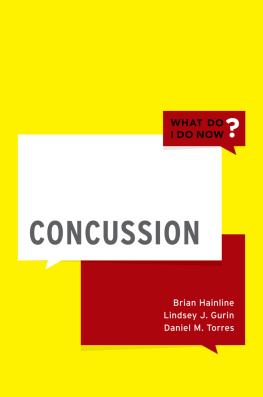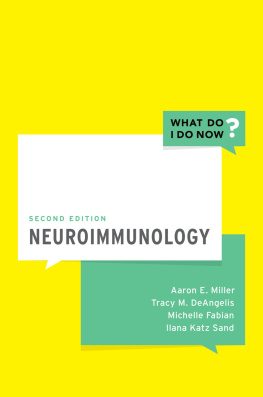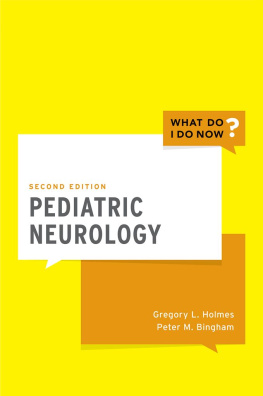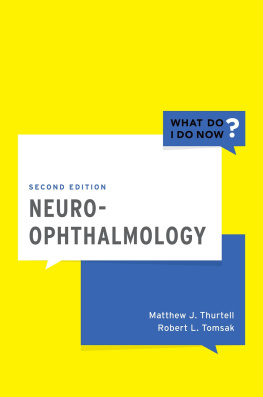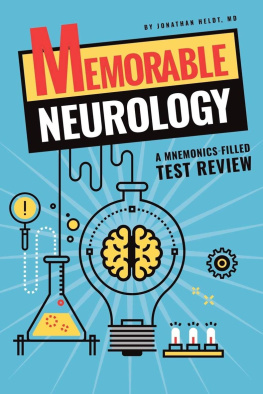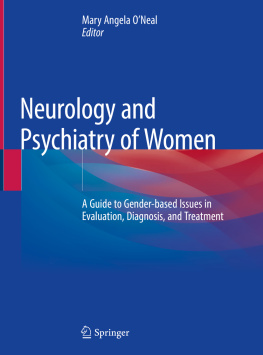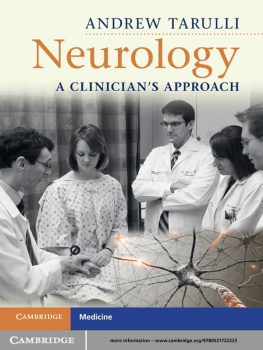- SECTION 1. ISSUES IN WOMEN DURING
THEIR REPRODUCTIVE YEARS - Routine Long-Term
Epilepsy Follow-up - A Woman with Weight
Gain and Fatigue
Womens Neurology
What Do I Do Now?
SERIES CO-EDITORS-IN-CHIEF
Lawrence C. Newman, MD
Director of the Headache Institute
Department of Neurology
St. Lukes-Roosevelt Hospital Center
New York, New York
Morris Levin, MD
Codirector of the Dartmouth Headache Center
Director of the Dartmouth Neurology Residency Training Program
Section of Neurology
Dartmouth Hitchcock Medical Center
Lebanon, New Hampshire
OTHER VOLUMES IN THE SERIES
Headache and Facial Pain
Peripheral Nerve and Muscle Disease
Pediatric Neurology
Stroke
Epilepsy
Neuro-ophthalmology
Neuroimmunology
Pain
Neuroinfections
Emergency Neurology
Cerebrovascular Disease
Movement Disorders
Neurogenetics
Neurotology

Oxford University Press is a department of the University of Oxford. It furthers the Universitys objective of excellence in research, scholarship, and education by publishing worldwide. Oxford is a registered trade mark of Oxford University Press in the UK and certain other countries.
Published in the United States of America by Oxford University Press 198 Madison Avenue, New York, NY 10016, United States of America.
Oxford University Press 2017
All rights reserved. No part of this publication may be reproduced, stored in a retrieval system, or transmitted, in any form or by any means, without the prior permission in writing of Oxford University Press, or as expressly permitted by law, by license, or under terms agreed with the appropriate reproduction rights organization. Inquiries concerning reproduction outside the scope of the above should be sent to the Rights Department, Oxford University Press, at the address above.
You must not circulate this work in any other form and you must impose this same condition on any acquirer.
CIP data is on file at the Library of Congress
ISBN 9780190609917
eISBN 9780190609931
This material is not intended to be, and should not be considered, a substitute for medical or other professional advice. Treatment for the conditions described in this material is highly dependent on the individual circumstances. And, while this material is designed to offer accurate information with respect to the subject matter covered and to be current as of the time it was written, research and knowledge about medical and health issues are constantly evolving and dose schedules for medications are being revised continually, with new side effects recognized and accounted for regularly. Readers must therefore always check the product information and clinical procedures with the most up-to-date published product information and data sheets provided by the manufacturers and the most recent codes of conduct and safety regulations. The publisher and the authors make no representations or warranties to readers, express or implied, as to the accuracy or completeness of this material. Without limiting the foregoing, the publisher and the authors make no representations or warranties as to the accuracy or efficacy of the drug dosages mentioned in the material. The authors and the publisher do not accept, and expressly disclaim, any responsibility for any liability, loss, or risk that may be claimed or incurred as a consequence of the use and/or application of any of the contents of this material.
Contents
SECTION 1. ISSUES IN WOMEN DURING
THEIR REPRODUCTIVE YEARS
M. Angela ONeal
M. Angela ONeal
Regina Krel and Paul G. Mathew
Regina Krel and Paul G. Mathew
M. Angela ONeal
M. Angela ONeal
Na Tosha N. Gatson and Terri L. Woodard
Routine Long-Term
Epilepsy Follow-up
Na Tosha N. Gatson
Alexandra Lovett and Whitney W. Woodmansee
A Woman with Weight
Gain and Fatigue
Alexandra Lovett and Whitney W. Woodmansee
P. Emanuela Voinescu
M. Angela ONeal
M. Angela ONeal
M. Angela ONeal
M. Angela ONeal
M. Angela ONeal
M. Angela ONeal
M. Angela ONeal
M. Angela ONeal
M. Angela ONeal
M. Angela ONeal
Janet Waters
Janet Waters
Janet Waters
Janet Waters
Tamara B. Kaplan and Marcelo Matiello
Marcelo Matiello and Tamara B. Kaplan
Sandra L. Horowitz
Eudocia Q. Lee
M. Angela ONeal
M. Angela ONeal
Chizoba Umeh
Marie Pasinski
M. Angela ONeal
I wanted to write a book that addressed the common problems clinicians face in caring for women with neurological disorders. The gender-specific neurological issues clearly vary at different points in a womans life. For example, these issues might include questions about reproductive health, pregnancy, or healthy aging. The books raison dtre is to heighten caregivers awareness about the gender differences in neurological care. A range of topics about womens health and neurological disorders is discussed, including: headache, stroke, epilepsy, neuropathy, Parkinsons disease, and Alzheimers disease. The case scenarios are illustrative of common dilemmas we all face in caring for female patients. The discussions weigh the evidence available to help us make informed decisions with the best information on the particular topic. The cases are meant to demonstrate a best-practice clinical algorithm.
Topics covered in the book include issues that are unique to women, as well as those that may affect both men and women, but may have a different risk, prevalence, presentation, or treatment considerations for women. The books format is based on the What Do I Do Now? texts, using case examples of common problems and questions that involve women with neurological disease and discussing how to best address the key issues. The aim is to give practical advice for everyday problems clinicians face in caring for women.
There is a lack of knowledge about how sex and gender may affect neurological illnesses. In addition, much of the research in this area is emerging or not widely publicized. Therefore, it can be challenging for physicians to stay on top of the latest research about how sex and gender affect the course of specific diseases, medication effects, and best neurological care. The book is meant to be a go-to manual to delineate best practices in womens neurology. It is written in a succinct straightforward style with tables, figures, and references illustrating the key clinical points. This book is unique as it addresses neurological problems women face throughout their lives, whereas previous texts in this area have been limited to neurological disorders that occur in pregnancy. The case-oriented format addressing the common clinical scenarios makes the book practical, relevant, and easy to read.
I hope you will enjoy reading the cases and working through the decision analyses. The authors did a great job in clarifying the dilemmas we all face on a regular basis in patient care. I know your female patients will benefit from the additional knowledge and expertise you gain after reading Womens Neurology.
Angela ONeal, MD
Regina Krel, MD
Angels Neurological Centers, PC
Brighton, Massachusetts
Paul G. Mathew, MD, FAAN, FAHS
Next page
